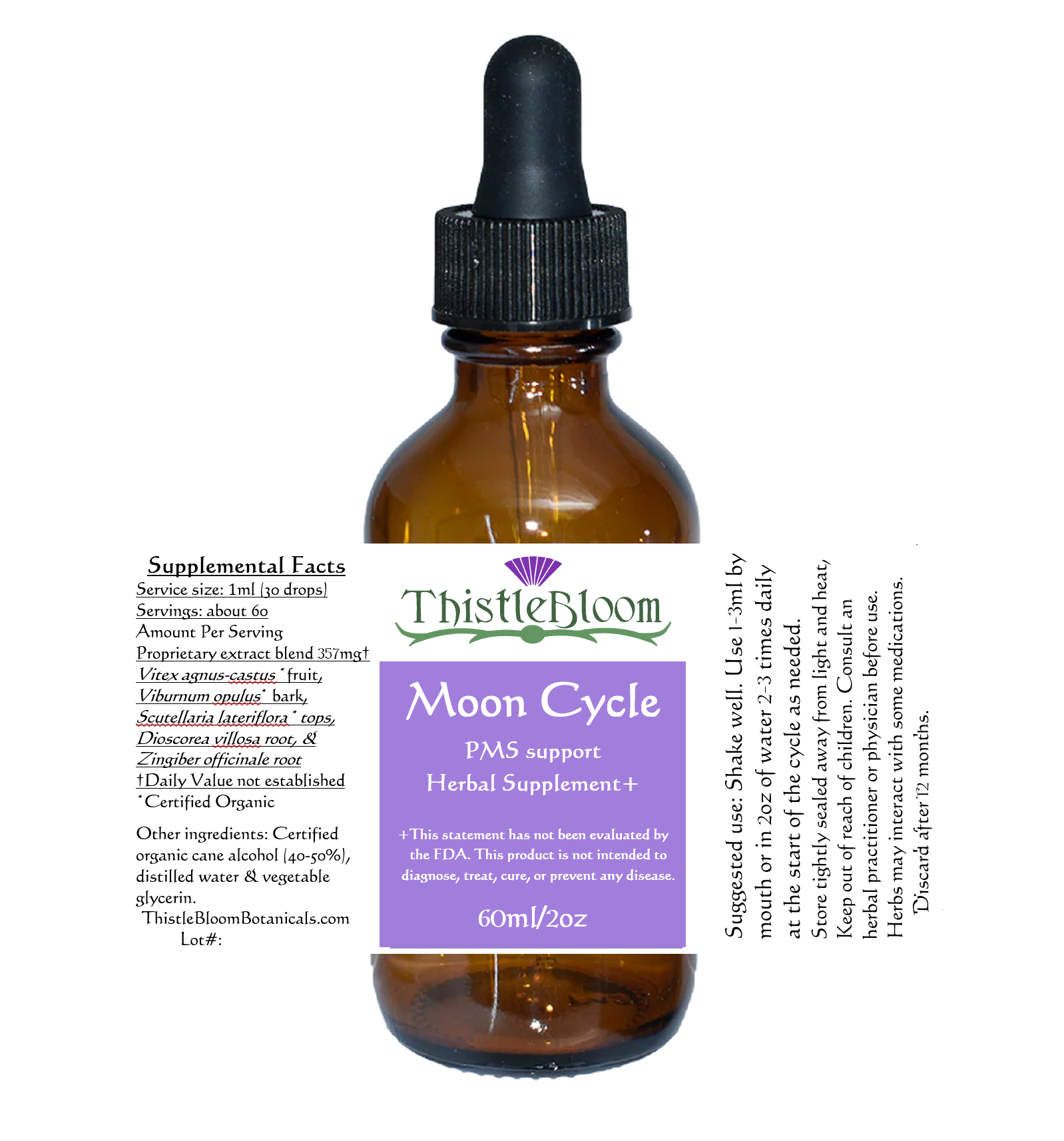Squeeze
Shake well and squeeze the dropper bulb to draw up the desired serving.

Service Size: 1ml
Approximately 60 servings
1ml contain 357mg of a proprietary herbal extract blend of:
Vitex agnus-castus* (chasteberry) fruit
Viburnum opulus* (crampbark) bark
Scutellaria laterifolia* (skullcap) aerial parts
Dioscorea villosa (wild) root
Zingiber officinale (ginger) root
Other ingredients: cane alcohol* (40-50%), distilled water, & vegetable glycerin*.
*NOP Certified Organic
Shake well and squeeze the dropper bulb to draw up the desired serving.
Release the serving into 2-4 ounces of water and drink. Or release the serving under the tongue, hold the serving there for a moment before swallowing.
For the best results, repeat this process as directed by the Suggested Use instruction on the product label.
Squeeze the dropper bulb to draw 1-3 milliliter.
Take directly under the tongue, or add it to 2-4 ounces or water or juice.
Can be used 1-3 times daily.
Chasteberry may interact with dopaminergic medication.
Crampbark has no known precautions.
Wild Yam has no known precaustions.
Skullcap has no known precautions, though it may increase the effect of other sedatives.
Ginger (Zingiber officinale) may enhance the effect of blood-thinning medication when used in high doses.
Bone, K & Mills, S. (2013). Principels and Practice of Phyotherapy (2nd ed). Churchill Livingstone Elsevier
Hoffmann, D. (2003). Medical Herbalism: The Science and Practice of Herbal Medicine. Healing Arts Press
Chasteberry was used in monasteries in the Middle Ages to suppress libido and was used in the mid-1900s for women's complaints.
Crampbark has a reputation for easing cramping in voluntary muscles and uterine muscles. It was sought to ease painful menstrual cramps.
Wild Yam has an association with the gynecological structures of the body. It has been used for centuries to ease symptoms of menopause and PMS by possibly acting like progesterone.
Skullcap has been used to calm the mind and is a comforting herb used for emotional well-being and relaxation during times of occasional distress.
Ginger is well-known in the culinary industry for adding warmth and spice to food. Its use stretches all around the world and has been used in many cultures for a wide range of conditions, from aiding digestion, warming stiff joints and soothing muscles, reducing fever, and easing discomforts from the menstrual cycle.